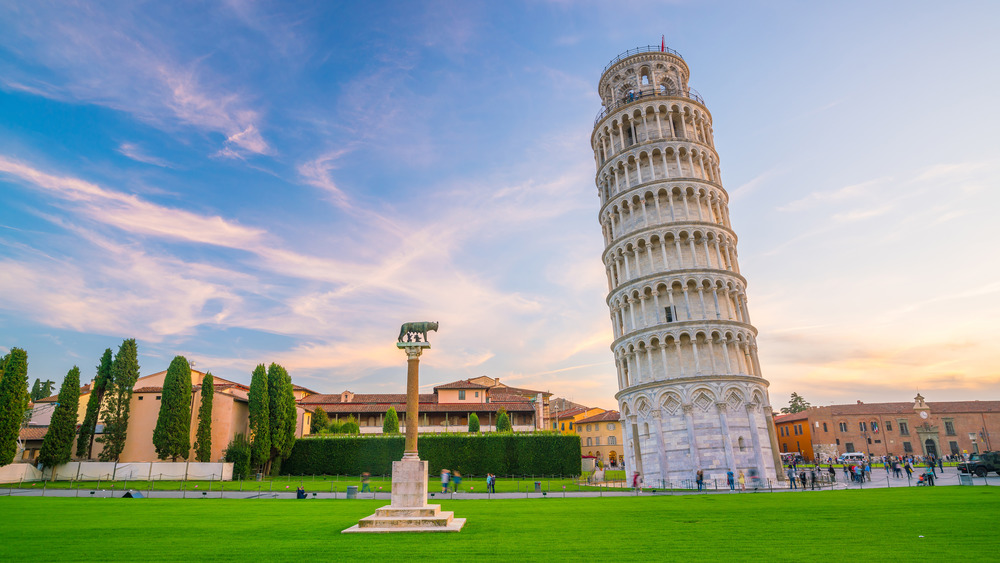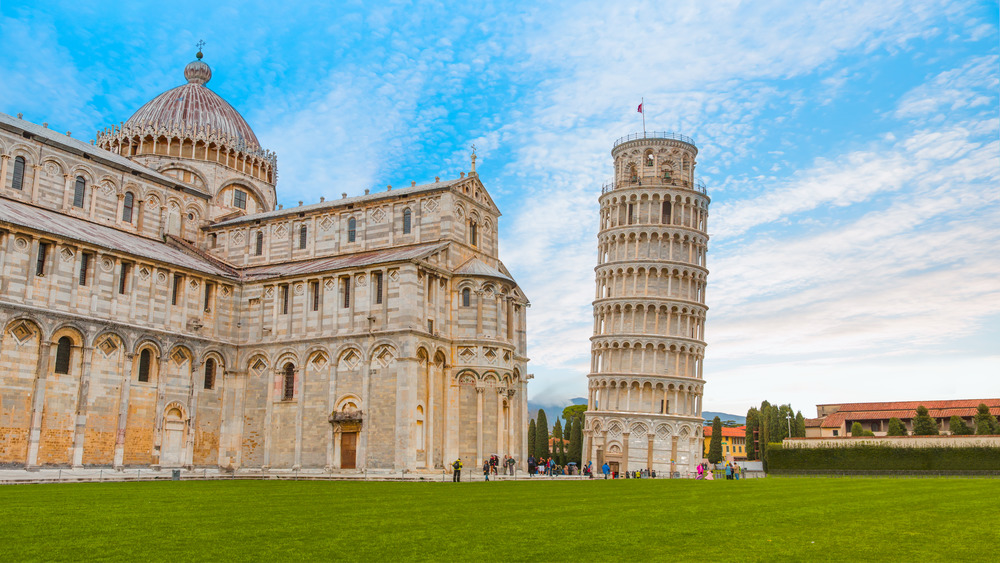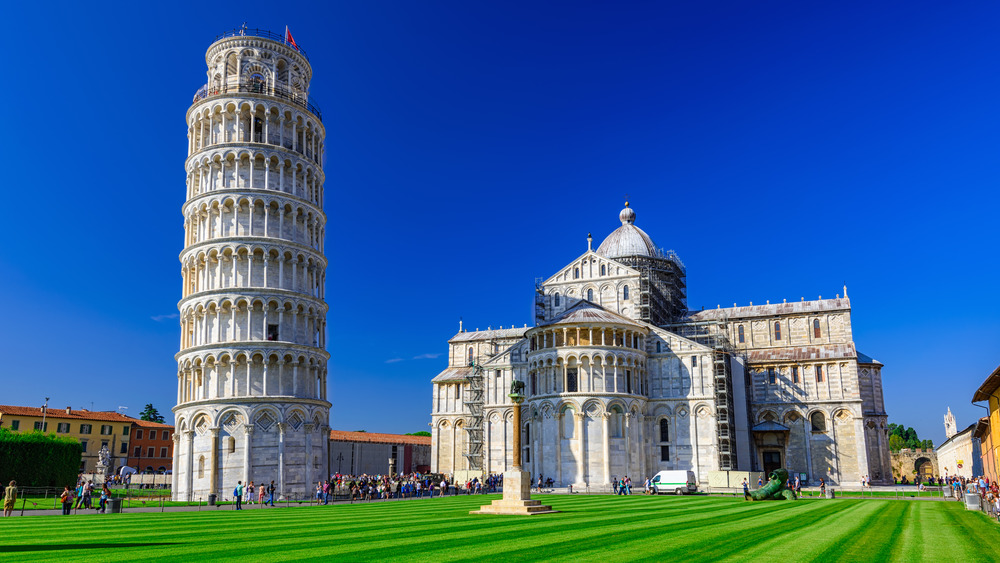Will The Leaning Tower Of Pisa Ever Fall Over?
The Leaning Tower of Pisa is known the world over for its distinctive slant, and it has survived several earthquakes and two world wars. However, have you ever wondered if this architectural marvel from the Middle Ages will ever fall over?
Standing almost 60 meters tall and meant to serve as the bell tower for the cathedral in the Piazza del Duomo, per the Leaning Tower of Pisa's official website, the structure is one of Italy's most famous tourist attractions. Its construction began in 1173, but as Smithsonian Magazine notes, once the third floor was finished, the building's foundation began to settle and the tower started to lean, so construction was stopped in 1178. Building started up again in 1272, and after several more periods of starting and stopping construction, the Tower was completed in 1399. Interestingly, these pauses in construction gave the loose subsoil a chance to settle and helped keep the building standing through the years.
According to the University of Bristol, the tower now leans at a five-degree angle after steps were taken to stabilize its increasingly slanted position. So, while the position of the Leaning Tower of Pisa makes it seem close to falling over, here we talk about why it's unlikely to collapse any time soon.
The mystery of the Leaning Tower of Pisa's slant, finally solved
Unfortunately, the Leaning Tower of Pisa's upright position was doomed from the outset. The monument's official website notes that the Tower started to shift early in its construction because of loose soil and a poorly laid foundation, though the full explanation for its downward slant was a mystery for centuries. However, the University of Bristol announced in 2018 that a team of 16 engineers, led by Professor George Mylonakis (head of the Earthquake and Geotechnical Engineering Research Group in the university's Department of Civil Engineering), had discovered how the famous structure has remained standing despite its precariously slanted position.
The research team studied geotechnical, seismological, and structural data for the Leaning Tower of Pisa and discovered that it still stands because of dynamic soil-structure interaction (DSSI) — a soil–structure interaction phenomena that can either amplify or weaken the effects of earthquakes on a building. The pairing of the structure's towering height and solid construction being built upon soft, shifting sands and soil over such a long period of time means that the Tower doesn't move as much as other buildings during seismic activity. This is the secret to the Tower's surprising survival through the ages, and why it hasn't fallen over yet.
The Leaning Tower's future looks stable
So, will the Leaning Tower of Pisa ever fall over? The Tower has been falling ever so slightly through the centuries and reached a tilt of 5.5 degrees in 1990. Additionally, multiple engineering projects have been undertaken to keep the structure standing while preserving its signature slant. Now, experts predict that the latest measures taken to stabilize the historical bell tower are enough to keep it standing, though still slanted, for centuries to come.
According to Smithsonian Magazine, the latest effort, which was completed in 2001, saw engineers successfully reduce the southward slant to an angle of four degrees. The BBC notes the feat was achieved by first fixing lead weights to the north side and removing soil beneath the north side to bring the Tower to a more vertical position.
In fact, a British engineer who helped lead the Tower's stabilization project, John Burland, an emeritus professor of civil and environmental engineering at the Imperial College of London, said the team predicts that the northward movement they initiated will stop in a few years, and the Tower will eventually return to its slow slant to the south. However, he's confident that the Leaning Tower of Pisa will remain standing unless a strong earthquake, or other disaster, causes a major shift to the foundation that could make it fall.


